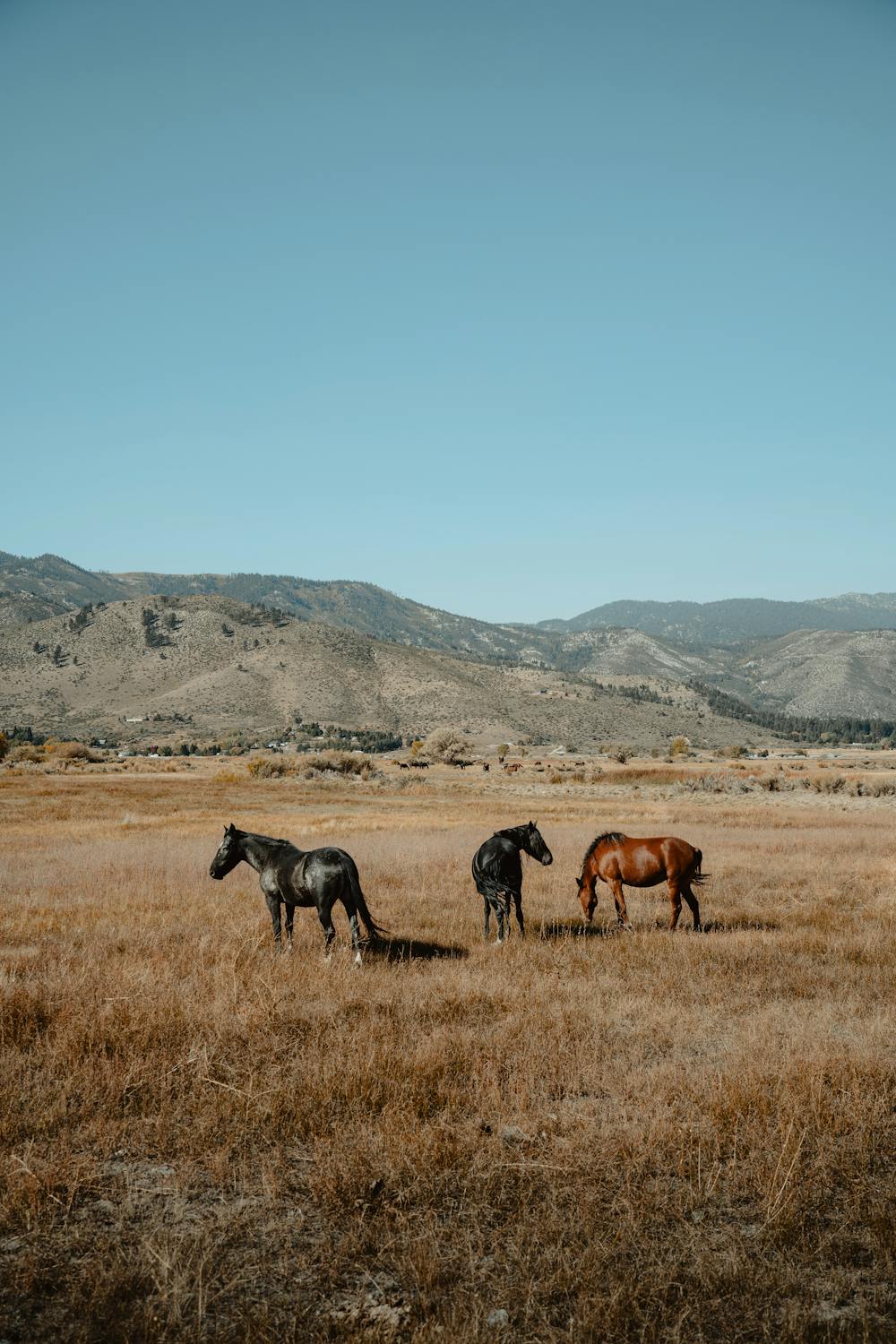The history of the 20th century is marked by profound events, and few are as devastating as the Holocaust. As creators deeply invested in exploring the intersection of history, culture, and human experience, we delve into the somber reality of the Nazi camp system. When we speak of “jewish camps,” we are referring to the vast network of sites across Nazi-occupied Europe where Jewish people were systematically imprisoned, persecuted, enslaved, and ultimately murdered on an industrial scale.
These were not camps run by Jewish people, but rather places of unspeakable suffering imposed upon them as the primary targets of the Nazi regime’s genocidal policy. Understanding these sites is crucial to comprehending the scale of the tragedy and honoring the memory of the victims.

The Nazi ideology was rooted in extreme racism and antisemitism, falsely blaming Jewish people for Germany’s problems and seeking their complete eradication from Europe. This twisted worldview fueled the systematic persecution that escalated from discrimination and forced emigration to ghettoization and eventually, mass murder in the camps. The term “Jewish camps” encompasses various types of institutions designed by the Nazis to isolate, control, exploit, and exterminate Jewish individuals and communities, alongside other targeted groups.
The Nazi Camp System: More Than Just Camps
The Nazi regime established a complex and sprawling system of camps across occupied territories between 1933 and 1945. While all prisoners faced brutal conditions, Jewish inmates were marked for unique horrors, culminating in the “Final Solution.” This system included several categories:
Concentration Camps: Initially used for political prisoners, opponents of the regime, and those deemed “undesirable,” these camps became holding pens and labor centers for millions, including vast numbers of Jews. Conditions were horrific, with starvation, disease, and arbitrary violence rampant.

Labor Camps: Often sub-camps of larger concentration or extermination camps, these forced inmates, including many Jews, into slave labor for the German war effort or Nazi industries. Work was backbreaking, food was scarce, and mortality rates were extremely high.
Extermination Camps: Designed specifically for mass murder, these camps were the killing centers of the Holocaust. Primarily located in occupied Poland, sites like Auschwitz-Birkenau, Treblinka, Sobibor, Belzec, Majdanek, and Kulmhof (Chelmno) were equipped with gas chambers to facilitate the rapid annihilation of arriving transports, overwhelmingly consisting of Jewish men, women, and children.
Transit and Collection Camps: Located throughout Europe, these camps served as temporary holding facilities where Jews and others were gathered before deportation to extermination or concentration camps further east. Drancy in France and Westerbork in the Netherlands are infamous examples.
While ghettos, distinct from camps, confined Jewish populations before deportations, their connection to the camp system was direct, serving as staging grounds for the final journey to death. The sheer scale and variety of these sites underscore the systematic nature of the Nazi attempt to destroy European Jewry.
Life and Death in Jewish Camps
The experience within these sites varied depending on the camp’s function and the individual’s fate upon arrival. In extermination camps, the majority of Jewish deportees were murdered almost immediately. Those selected for temporary survival were often chosen for forced labor or horrific medical experiments. In concentration and labor camps, daily life was a struggle against starvation, disease, exhaustion, and constant brutality from guards and kapos.

Jewish prisoners faced additional persecution. They were often subjected to the cruelest tasks, given the least food, and were prime targets for arbitrary killings. Maintaining any semblance of humanity, practicing religious rituals in secret, or simply surviving became acts of profound defiance. Stories of underground resistance, cultural activities hidden from guards, and mutual support among inmates highlight the resilience of the human spirit even in the darkest circumstances.
A Glimpse at the Sites: Nazi Camps by Region
The list below provides a geographical overview of many Nazi camps established during the 1939-1945 period, classified by the borders of that time. It’s crucial to remember that Jewish people were among the victims imprisoned and murdered in many, if not most, of these locations, particularly in Eastern Europe where the extermination camps were concentrated. This list is not exhaustive; it is estimated that thousands more smaller or temporary camps existed. The information is based on historical records, including the sources mentioned in the original text.
A star () indicates camps known to have held women.*
Germany:
- Bergen-Belsen (probably 2 sub-camps but location is unknown)
- Brgermoor (no sub-camp known)
- Buchenwald (174 sub-camps and external kommandos)
- Dachau (123 sub-camps and external kommandos)
- Dieburg (no sub-camp known)
- Esterwegen (1 sub-camp)
- Flossenburg (94 sub-camps and external kommandos)
- Gundelsheim (no sub-camp known)
- Neuengamme (96 sub-camps and external kommandos)
- Papenburg (no sub-camp known)
- Ravensbruck* (31 sub-camps and external kommandos)
- Sachsenhausen (44 sub-camps and external kommandos)
- Sachsenburg (no sub-camp known)
April 12th, 1945: Allied forces liberate the Nordhausen concentration camp in Germany, part of the Dora-Mittelbau complex.
- Nuxei
- Oberndorf (L. Muna aircraft munitions)
- Ohrdruf (railroad construction)
- Oschersleben “Ago”
- Osterode (Mech. Ind. fa C Heder)
- Osterhagen
-
- Penig (Gehrt)
- Plomnitz
- Quedlinburg (Fleigerhorst)
- Quedlindburg (Fa Heerbrandt)
- Raguhn
- Rehmsdorf “Willy”
- Roemhild
- Rossla
- Rothenburg (Fa Mansfeld AG)
- Rottleberode (Thyrawerke)
- Saalfeld Oertelsbruch
- Salza-Thuringe (production of V flying bombs)
- Sangerhausen
- Schlieben (Hasag)
- Schoenau (ATG Maschinebau GmbH)
- Schnbeck (Hasag)
- Schwalbe V
- Schwerte
- Sennelager (Panzerausbildungsregiment)
- Soemerda (Fa Rheinmetall)
- Sollstedt
- Sonneberg (Tandradbedrijf C.G. Rheinhardt)
- Stassfurt (construction of an underground factory for C.G. Rheinhardt)
- Stutzpunkt Sauerland 1
- Suhl
- Tannenwald
- Tanndora (Paper factory)
- Taucha (Hasag)
- Thekla (Erla-Werke)
- Tonndorf (bauleitung Waffen SS)
- Torgau (munitions)
- Trautenstein
- Troeglits (Brabag)
- Unna
- Walkenried-Wolfleben (Constructions)
- Wansleben (Fa C. Mansfeld)
- Wansleben “Wilhelm”
- Wansleben “Biber II”
- Werferlingen (Constructions)
- Weimar-Fischtenhain
- Weimar (Rautalwerke GmbH)
- Wernigerode (Junker)
- Westeregeln
- Wewelsburg (Guszstahlwerke)
- Wickerode
- Wieda
- Witten-Annen (Ig. Farbenindustrie)
- Woebbelin
May 4th, 1945: American soldiers stand among bodies at the recently liberated Woebbelin concentration camp.
- Wolfen
- Wuppertal
- Zeitz “Willy”
- Zella Mehlis
- Zorbig
Austria:
(No specific camps listed in the original text for this category)
Belgium:
(No specific camps listed in the original text for this category)
Czechoslovakia:
- Theresienstadt (Terezin)
- Bohusovice
- Kopisti
- Litomerice-Radobylberg
- Litomerice
- Lovosice (Sputh factory and an oil factory)
- Nestemice
- Terezin (Plavy mill)
- Usti (Schicht factory)
- Zalhostice
- Kratzau / Chrastava (sub-camp of Gross-Rosen – Rogoznica, Poland)
Estonia:
- Vivara
Finland:
- Kangasjarvi
- Koveri
France:
- Argeles
- Aurigny
- Brens
- Drancy (Transit camp, primary collection point for Jews deported from France)
- Gurs
- Les Milles
- Le Vernet
- Natzweiler-Struthof (70 sub-camps and external kommandos)
- No
- Rcbdou
- Rieucros
- Rivesaltes
- Suresnes
- Thill
- (for these camps, no sub-camp known)
Work camps created by the Government of Vichy in Maroco and Algeria. Following the Atlas of the Holocaust by Martin Gilbert, thousands of Jews were sent to these camps by the French pro-Nazi government of Petain:
- Abadla
- Ain el Ourak
- Bechar
- Berguent
- Bogari
- Bouarfa
- Djelfa
- Kenadsa
- Meridja
- Missour
- Tendrara
Holland:
(No specific camps listed in the original text for this category)
Italy:
- Bolzano (Transit camp)
- Fossoli (Transit camp)
- Risiera di San Sabba (Police Detention Camp with crematorium in Trieste) (no sub-camp known)
Latvia:
- Riga (Ghetto and concentration camp complex)
- Riga-Kaiserwald (Concentration camp)
- Dundaga
- Eleje-Meitenes
- Jungfernhof (Concentration camp/estate)
- Lenta
- Spilwe
Lithuania:
- Kaunas (Ghetto and concentration camp)
- Aleksotaskowno
- Palemonas
- Pravienisks
- Volary
Norway:
- Baerum (Grini prison camp)
- Berg
- Bredtvet
- Falstadt
- Tromsdalen
- Ulven
Poland:
(The German names of the camps are followed by the actual Polish names)
- Auschwitz/Birkenau – Oswiecim-Brzezinka (Extermination camp complex – 51 sub-camps. The largest killing center)
- Belzec (Extermination camp – 1 sub-camp)
- Bierznow
- Biesiadka
- Dzierzazna & Litzmannstadt (These two camps were “Jugenverwahrlage”, children camps. Hundreds of children and teenagers considered as not good enough to be “Germanized” were transferred to these places – and later sent to the extermination centers. Many of these children were Jewish.)
- Gross-Rosen – Rogoznica (Concentration camp – 77 sub-camps)
- Huta-Komarowska
- Janowska (Lwow Concentration/Extermination camp)
- Krakow (Plaszow Concentration Camp, initially a labor camp, later a sub-camp of Majdanek)
- Kulmhof – Chelmno (Extermination camp – no sub-camp known. First extermination camp using gas vans.)
- Lublin (Majdanek Concentration/Extermination camp complex nearby) (prison – no sub-camp known in original text, but linked to Majdanek)
- Lwow (Lemberg) (Janowska complex nearby)
- Czwartaki
- Lemberg (Ghetto and camp complex)
- Majdanek (Lublin Concentration and Extermination camp – 3 sub-camps)
- Mielec
- Pawiak (Warsaw prison and transit camp) (prison – no sub-camp known)
- Plaszow (Work camp, became sub-camp of Majdanek)
- Poniatowa (Labor camp)
- Pustkow (Work camp – no sub-camp known)
- Radogosz (Lodz prison and camp) (prison – no sub-camp known)
- Radom (Ghetto and labor camp)
- Schmolz
- Schokken (Probably Skoki concentration camp)
- Sobibor (Extermination camp – no sub-camp known)
- Stutthof – Sztutowo (Concentration camp near Gdansk – 40 sub-camps and external kommandos)
- Treblinka (Extermination camp – no sub-camp known. Two separate camps: Treblinka I (labor) and Treblinka II (extermination))
- Wieliczka (Salt mine labor camp, sub-camp of Plaszow)
- Zabiwoko (Work camp – no sub-camp known)
- Zakopane (Gestapo prison/torture site)
Russia:
(The real number of concentration and extermination camps established in occupied Soviet Union by the Nazis is unknown. The following list contains the name of the major camps. Some of these camps were under Romanian control during the occupation; e.g. Akmtchetka or Bogdanovka where 54,000 were executed between December 21st and December 31st, 1941, primarily Jews.)
- Akmtchetka
- Balanowka
- Bar
- Bisjumujsje
- Bogdanovka (Mass killing site)
- “Citadelle” (The real name of this camp is unknown. The camp was located near Lvov. Thousands of Russian POWs were killed in this camp, alongside other victims including Jews.)
- Czwartaki
- Daugavpils (Ghetto and concentration camp)
- Domanievka (Mass killing site)
- Edineti (Transit camp)
- Kielbasin (or Kelbassino)
- Khorol (POW and concentration camp)
- Klooga (Concentration camp)
- Lemberg (Lwow Ghetto and Janowska camp complex)
- Mezjapark
- Ponary (Paneriai – Mass killing site near Vilnius)
- Rawa-Russkaja (Ghetto and transit camp)
- Salapils (Salaspils concentration camp in Latvia, listed incorrectly under Russia in original)
- Strazdumujsje
- Yanowski (Janowska, listed under Poland, also applicable here as Lwow was in occupied USSR/Ukraine)
- Vertugen
- (for all these camps, no sub-camp known).
Yougoslavia (Yugoslavia):
- Banjica (Belgrade concentration camp)
- Brocice (Part of Jasenovac complex)
- Chabatz (Sabatac concentration camp)
- Danica (Concentration camp)
- Dakovo (Concentration camp)
- Gornja reka (Children’s concentration camp)
- Gradiska (Stara Gradiska, part of Jasenovac complex)
- Jadovno (Ustaše concentration camp)
- Jasenovac (Ustaše extermination/concentration camp complex)
- Jastrebarsko (Children’s concentration camp)
- Kragujevac (Site of massacres)
- Krapje (Part of Jasenovac complex)
- Kruscica (Concentration camp)
- Lepoglava (Prison and concentration camp)
- Loborgrad (Concentration camp, primarily for women and children)
- Sajmite (Sajmište concentration camp in Belgrade)
- Sisak (Children’s concentration camp)
- Slano (Ustaše concentration camp)
- Slavonska-Pozega (Prison and labor camp)
- Stara-Gradiska (Part of Jasenovac complex)
- Tasmajdan (Belgrade concentration camp/ghetto)
- Zemun (Sajmište was located in Zemun)
- (for all these camps, no sub-camp known).
Remembering and Honoring the Victims
Exploring the history of “jewish camps” is a difficult but essential journey. These sites serve as stark reminders of humanity’s capacity for hatred and the devastating consequences of unchecked prejudice and state-sponsored terror. Visiting former camp sites today, transformed into memorials and museums, is a powerful, albeit somber, way to connect with the past and pay respects to the millions who perished.
Understanding the devastating history of Jewish camps highlights the importance of preserving Jewish culture and community today. Initiatives like jewish summer camp play a vital role in connecting younger generations to their heritage and building resilient communities for the future, serving as a testament to life and continuity in the face of attempts at annihilation.
Education is the most potent tool against repeating the atrocities of the past. Learning about the specific mechanisms of persecution, the lives of the victims, and the geography of the camp system is crucial for fostering tolerance and vigilance against antisemitism and all forms of hatred in the world today.
According to the United States Holocaust Memorial Museum (USHMM), the Nazi regime and its collaborators established over 42,000 camps, ghettos, and other sites of detention, forced labor, and murder between 1933 and 1945. This vast network underscores the systematic and widespread nature of the persecution.
Frequently Asked Questions About Jewish Camps
What were “Jewish camps” during the Holocaust?
The term “Jewish camps” refers to the concentration camps, extermination camps, labor camps, and transit camps established by the Nazis and their collaborators where Jewish people were imprisoned, persecuted, enslaved, and murdered as part of the Holocaust. These camps were not run by Jewish individuals but were instruments of the Nazi genocide targeting Jews.
How many Jewish people died in these camps?
It is estimated that approximately six million Jewish men, women, and children were murdered during the Holocaust. The vast majority of these victims perished in the extermination camps or from the brutal conditions, starvation, disease, and violence in concentration and labor camps.
What was the difference between a concentration camp and an extermination camp?
Concentration camps were primarily designed for imprisonment, forced labor, and terrorizing opponents and unwanted groups. While death rates were extremely high due to conditions, they were not exclusively killing centers. Extermination camps, on the other hand, were built with the primary purpose of mass murder, equipped with gas chambers to systematically kill large numbers of people, overwhelmingly Jews, immediately upon arrival.
Can I visit former Jewish camps today?
Yes, many former Nazi camps, particularly the major sites like Auschwitz-Birkenau, Dachau, Sachsenhausen, and Terezin (Theresienstadt), have been preserved as memorials and museums. They are open to the public for visits, offering guided tours and exhibitions to educate visitors about the history of the Holocaust and honor the victims.
Why is it important to learn about Jewish camps?
Learning about Jewish camps and the Holocaust is crucial for several reasons: it honors the memory of the victims, helps us understand the dangers of antisemitism, racism, and hatred, educates us about the consequences of unchecked state power, and reinforces the importance of human rights, tolerance, and standing up against injustice in the present day.
Conclusion
The history of the camps where Jewish people suffered and perished during the Holocaust is a harrowing chapter, but one that must be studied and remembered. These sites, spread across Europe, represent the physical manifestation of a genocidal ideology. By understanding the different types of camps, the experiences of those imprisoned within them, and the sheer scale of the tragedy, we gain a deeper appreciation of the human cost of hatred and the critical importance of preserving memory and advocating for a world free from such atrocities. The legacy of the “jewish camps” serves as a perpetual warning and a call to ensure that “never again” is not just a phrase, but a commitment.

